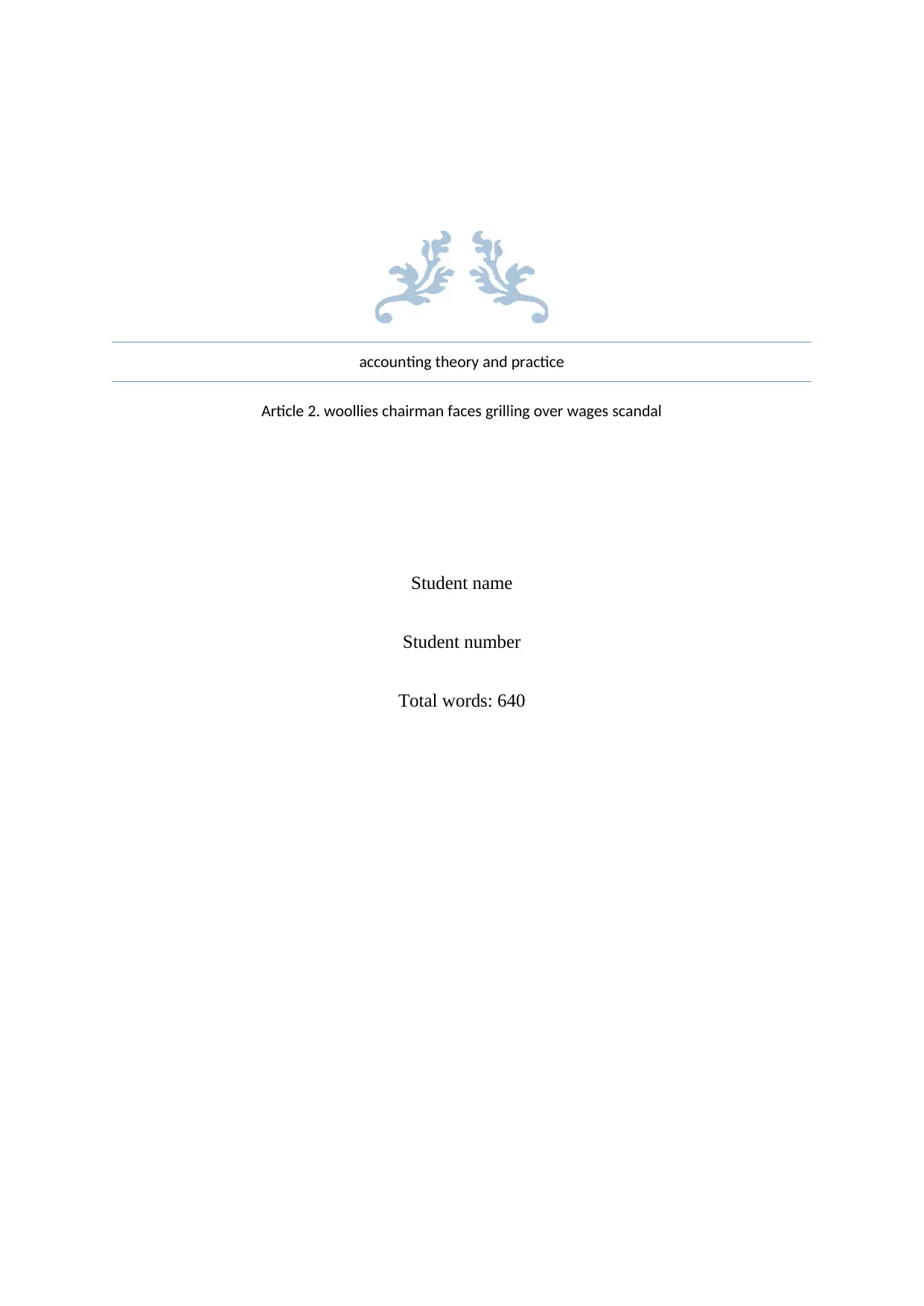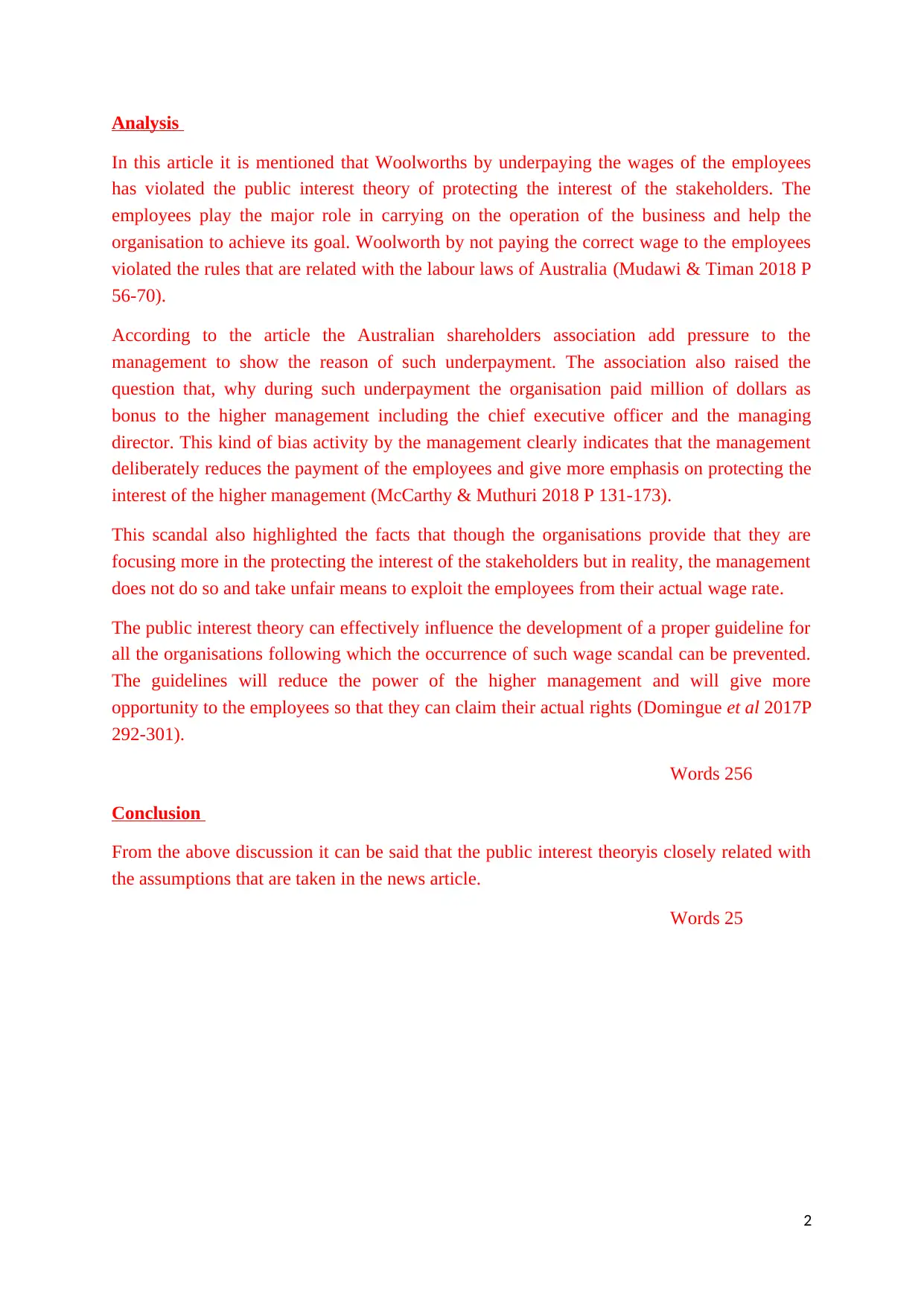Analysis of Woolworths Wage Scandal and Public Interest Theory
VerifiedAdded on 2022/08/26
|4
|886
|20
Report
AI Summary
This report analyzes the Woolworths wage scandal, focusing on the underpayment of employee wages and its implications for public interest theory. The report begins with a summary of the news article, which details the scandal and the concerns raised by the Australian Shareholders Association regarding the company's actions and the large bonuses paid to senior executives despite the wage underpayment. The report then explains the public interest theory, its descriptive, instrumental, and normative approaches, emphasizing the importance of protecting stakeholders, including employees, investors, and the community. The analysis section discusses how Woolworths violated this theory by underpaying employees, violating Australian labor laws, and prioritizing the interests of higher management over employees. The report concludes that public interest theory is closely related to the issues raised in the news article and can influence the development of guidelines to prevent future wage scandals. References to supporting literature are also provided.
1 out of 4











![[object Object]](/_next/static/media/star-bottom.7253800d.svg)